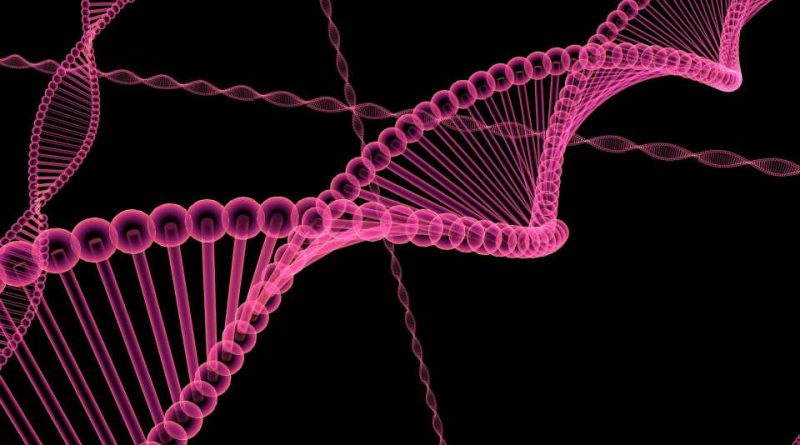Liquid biopsy may help identify which patients with non-small cell lung cancer will benefit most from radiation

A novel liquid biopsy test may help determine which patients with non-small cell lung cancer that has spread beyond the lungs are most likely to benefit from targeted, high-dose radiation, rather than drug-based therapy, a new study suggests. Findings were presented at the American Society for Radiation Oncology (ASTRO) Annual Meeting and published in npj Precision Oncology.
The study found that a liquid biopsy test—which identifies tumor DNA circulating in the blood—can help distinguish if a patient’s cancer has spread to just a few tumor sites or spread more widely. This indicator would help physicians determine which type of treatment would be most effective for each patient.
“Our findings suggest the level of circulating tumor DNA, rather than the number of tumors themselves, is a more precise measure of disease burden,” said senior study author Aadel Chaudhuri, MD, Ph.D., an assistant professor of radiation oncology at the Siteman Cancer Center of Washington University School of Medicine in St. Louis.
Non-small-cell lung cancer (NSCLC) accounts for about 84% of all lung cancers, which are the leading cause of cancer death in the U.S. and worldwide.
Patients diagnosed with NSCLC who have widespread metastatic disease, where cancer spreads past a person’s lungs and lymph nodes, generally cannot be cured, said Dr. Chaudhuri. But some patients with oligometastatic disease—where the cancer has spread to just a few sites—experience long periods of cancer-free survival when treated with high-dose radiation targeted to the individual tumor sites.
Identifying which patients with oligometastatic disease will benefit from this type of focused radiation treatment has been challenging, said Dr. Chaudhuri.
Tumor tissue biopsy—long considered the gold standard for analyzing solid tumors—only examines the site where the tissue sample was taken, and imaging tests also have limitations for detecting micro-metastatic disease, Dr. Chaudhuri explained. Likening a visible tumor to an iceberg, he said it’s difficult for imaging tests to show “if the disease is just the part of the iceberg that’s visible above the water, or if there’s substantially more micro-metastatic disease beneath the surface.”
Liquid biopsy tests can detect elements of solid tumor cancers in blood, urine or cerebrospinal fluid. Blood tests are the most widely used type of liquid biopsy and can identify circulating tumor DNA (ctDNA), circulating tumor cells (CTC), circulating RNA and other biomarkers that signal the presence of cancer.
“Liquid biopsy,” said Dr. Chaudhuri, “could help us know if there is micro-metastatic disease.”
Dr. Chaudhuri and his colleagues previously used liquid biopsy technology to monitor the status of patients with colorectal cancer, bladder cancer and peripheral nerve tumors.
In the current study, a real-world, multi-institutional analysis, the researchers analyzed data from 2016 to 2022 for 309 patients with oligometastatic NSCLC who received radiation therapy following liquid biopsy. Oligometastatic disease was defined in this study as metastatic disease in at least one, and up to five, organ systems. Patients were an average of 64.7 years old.
Patients with detectable ctDNA prior to radiation therapy had worse overall survival than those whose blood showed no detectable ctDNA prior to treatment. For those whose blood showed traces of ctDNA, median overall survival was 16.8 months, compared to 25 months for patients with no ctDNA detected prior to treatment (p=0.030, HR=1.65, CI=1.05–2.61).
Likewise, progression-free survival was worse for those whose blood showed traces of ctDNA prior to radiation therapy. Median progression-free survival was 5.4 months for patients with detectable ctDNA, compared to 8.8 months for those with no detectable ctDNA prior to treatment (p=0.004, HR=1.57, CI=1.15–2.13). These findings were corroborated by multivariate models that included eight additional clinical and genomic parameters.
The findings suggest that patients with no or low levels of detectable ctDNA are most likely to benefit from radiation therapy, whereas those with higher detectable levels of ctDNA are more likely to need systemic therapy, such as chemotherapy or immunotherapy, Dr. Chaudhuri said.
“When you have a detectable ctDNA level, you have a higher burden of disease. Our findings indicate that we can use this biomarker to support patient-centered treatment decisions in the oligometastatic cancer setting,” he said.
Journal information:
npj Precision Oncology
Source: Read Full Article



